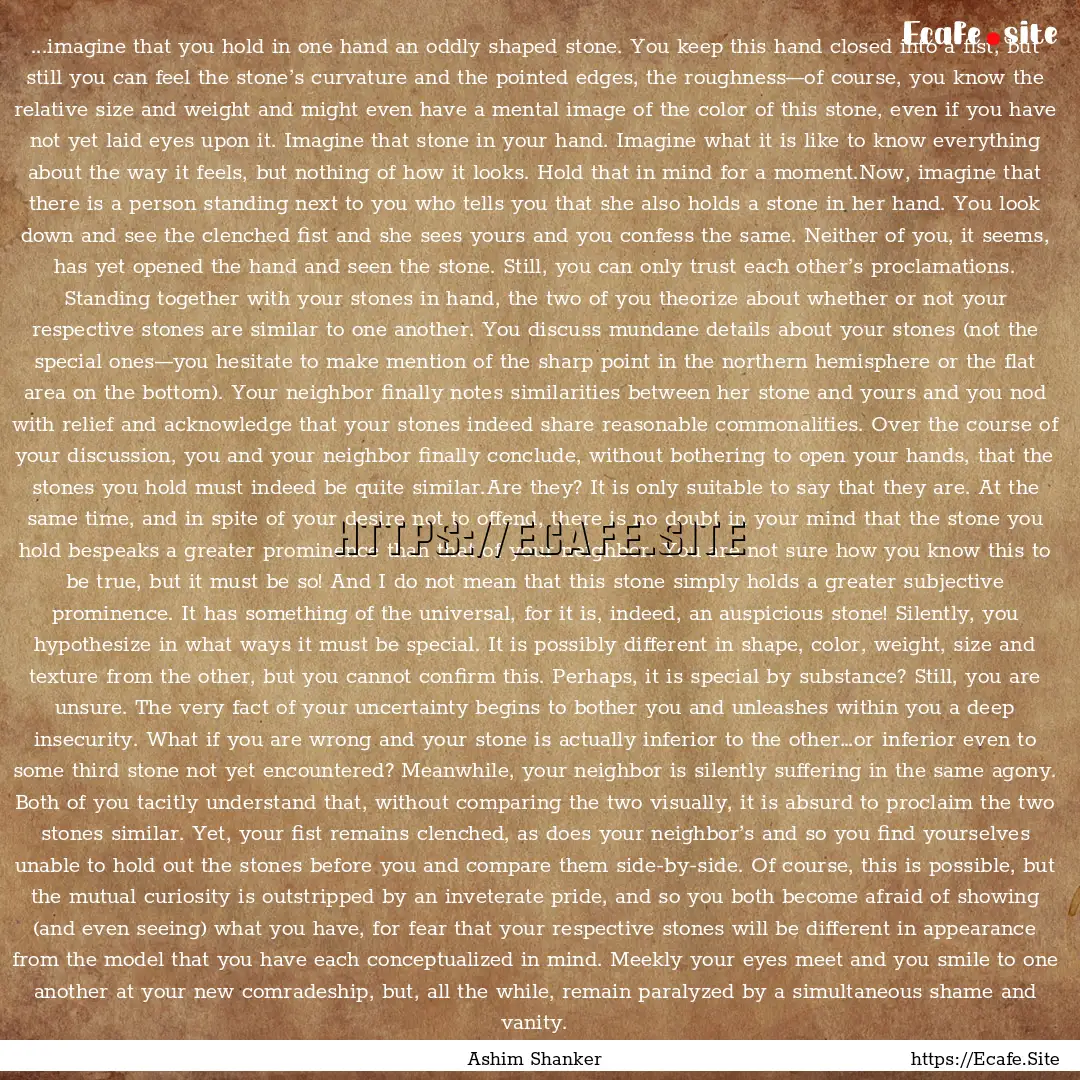
Report, if you have a problem with this page“ ...imagine that you hold in one hand an oddly shaped stone. You keep this hand closed into a fist, but still you can feel the stone’s curvature and the pointed edges, the roughness—of course, you know the relative size and weight and might even have a mental image of the color of this stone, even if you have not yet laid eyes upon it. Imagine that stone in your hand. Imagine what it is like to know everything about the way it feels, but nothing of how it looks. Hold that in mind for a moment.Now, imagine that there is a person standing next to you who tells you that she also holds a stone in her hand. You look down and see the clenched fist and she sees yours and you confess the same. Neither of you, it seems, has yet opened the hand and seen the stone. Still, you can only trust each other’s proclamations. Standing together with your stones in hand, the two of you theorize about whether or not your respective stones are similar to one another. You discuss mundane details about your stones (not the special ones—you hesitate to make mention of the sharp point in the northern hemisphere or the flat area on the bottom). Your neighbor finally notes similarities between her stone and yours and you nod with relief and acknowledge that your stones indeed share reasonable commonalities. Over the course of your discussion, you and your neighbor finally conclude, without bothering to open your hands, that the stones you hold must indeed be quite similar.Are they? It is only suitable to say that they are. At the same time, and in spite of your desire not to offend, there is no doubt in your mind that the stone you hold bespeaks a greater prominence than that of your neighbor. You are not sure how you know this to be true, but it must be so! And I do not mean that this stone simply holds a greater subjective prominence. It has something of the universal, for it is, indeed, an auspicious stone! Silently, you hypothesize in what ways it must be special. It is possibly different in shape, color, weight, size and texture from the other, but you cannot confirm this. Perhaps, it is special by substance? Still, you are unsure. The very fact of your uncertainty begins to bother you and unleashes within you a deep insecurity. What if you are wrong and your stone is actually inferior to the other…or inferior even to some third stone not yet encountered? Meanwhile, your neighbor is silently suffering in the same agony. Both of you tacitly understand that, without comparing the two visually, it is absurd to proclaim the two stones similar. Yet, your fist remains clenched, as does your neighbor’s and so you find yourselves unable to hold out the stones before you and compare them side-by-side. Of course, this is possible, but the mutual curiosity is outstripped by an inveterate pride, and so you both become afraid of showing (and even seeing) what you have, for fear that your respective stones will be different in appearance from the model that you have each conceptualized in mind. Meekly your eyes meet and you smile to one another at your new comradeship, but, all the while, remain paralyzed by a simultaneous shame and vanity. ”




